Inkjet is everywhere. Inkjet technology is moving fast; leveraging new fluids and creative chemistries to print on new and challenging substrates. More substrate compatibility has opened exciting markets within manufacturing facilities which have typically outsourced design and even print. Now, more of the process can be brought in-house with faster turn, higher profits and stunning results across a range of applications.
Welcome to Industrial Printing

Industrial inkjet print samples
From automotive, décor to personal care and pharmaceutical, products which were once printed with screen or pad print technology are now moving towards inkjet. These markets are not just creating opportunities for in-sourcing printing, but also to improve customer service by engaging trained designers who understand how to create proper artwork compatible with the industrial inkjet environment including fluids and substrates for the end-to-end product production process.
For example, products which were dependent on printed labels are moving direct-to-shape inkjet printing. AP InBev in Leuven, Belgium is helping to lessen the use of plastics by evolving from preprinted plastic labels to printing directly on the bottle. A limited-edition release of 200,000 bottles were designed with the help of artists to create the Becks’ Artist Series. Each design is truly a piece of art.
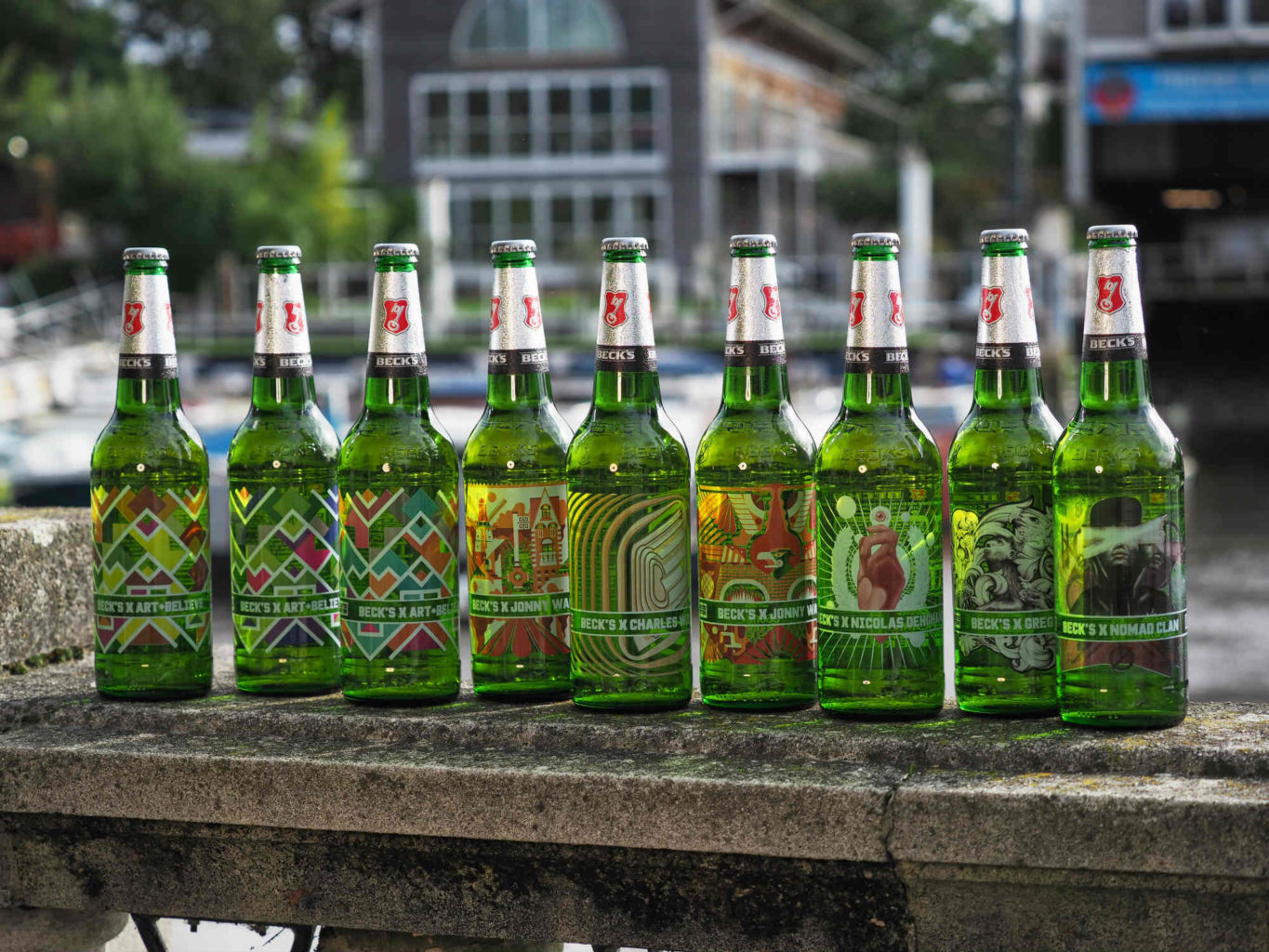
Beck’s Limited Edition Artist Series- Direct-to-product inkjet printing
Specialty small run marketing campaigns such as this one are common in direct mail, but this approach is revolutionary for a large bottling company. While 200,000 may not sound like a small run to you, it seems puny to large bottling or to product manufacturers. Having the opportunity to run 200,000 or 20 on demand specialty graphics can let a brand change a product’s message daily keeping up with current events, industry trends or just a desire for personalization. Guess what? More customization means more design work.
Designers are Critical to the Manufacturing Process
Designing for industrial inkjet is not just about aesthetics or brand management. It requires a technical grasp of complex topics like assigning ink combinations which ensure proper curing or drying, adhesion, wet-out and sizing for difficult substrates. It’s important to understand how image quality and color shifts can occur based on changes in manufacturing or environment in order to create a designs which are pleasing and production-friendly.
Proper color matching for branding is crucial. Parts, which may be clear when printed but then backed up with various colors when finished, laminated, molded or filled can be a challenge. How the product moves through the manufacturing process including stacking application, product abrasion, chemical baths, heat, glaze or disinfection all can affect the image area. Knowing when and where these things happen in the process will help a designer understand what areas of a product are free-space or un-impacted by the production.
It’s important to understand designing for the production process, but that’s not the end of the process. Designers need to think about how the product will be shipped, displayed, and the environment in which it will be used. For example, printing on bottles or cans is very different from printing on something that will be walked on, weathered or worn.
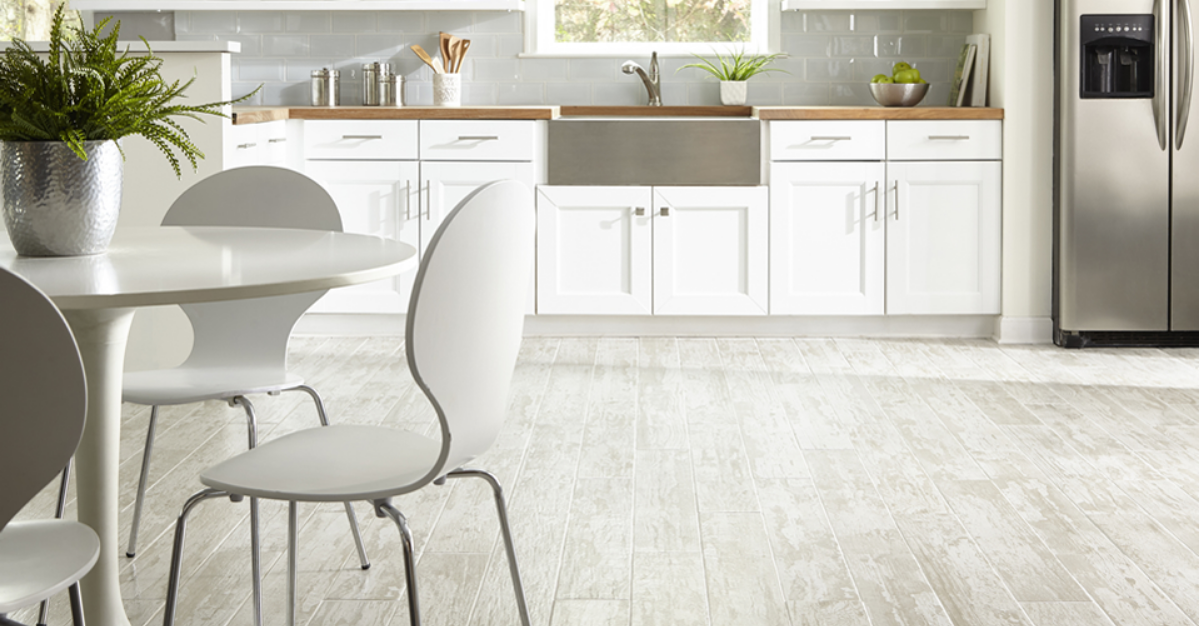
Inkjet Flooring from Floor and Decor
There are unique design challenges within the décor segment as well. Designing continuous patterns for wall paper or flooring applications are different than product designs which will be part of product displays such as store shelving, end caps or corrugated product displays. The many components of a product design must come together in a complete whole with all potential intersections and viewing angles accounted for up front.
The designer may not know all uses for the product in advance, but they should understand expectations for the environment such as indoor/outdoor, heavy traffic, etc. Industrial products that must endure environmental elements while being able to roll, fold or bend must also be designed so that patterns are seamless or gapless from all angles, no matter the use.
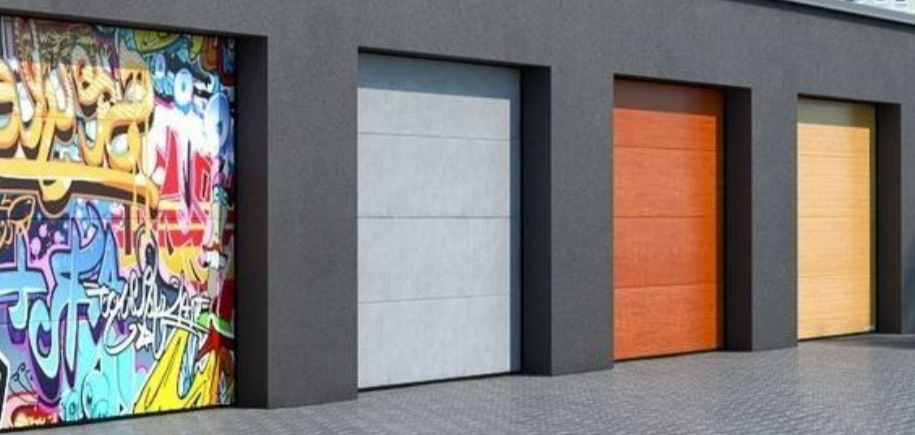
Inkjet printed garage door panels by axpanel
Sometimes designing for production can be disconnected from actual use or display. Knowing the entire process is critical to asking the right questions.
Working with white inks, varnishes and non-process color ink combinations are common in the industrial inkjet space. If special inks are not defined properly within Adobe programs it can create additional work or even down time for manufacturers within the production process.
Prepress Knowledge Required
Creating a finished PDF to be production ready will most likely be part of a designer’s job when working in-plant. This includes understanding the interface between design and the printer. This interface is called the Raster Image Processor or RIP. The RIP can be off-line and files staged, or it can be directly communicating with the industrial printer driving the production. In both cases the entire process from preparation to print is critical.
To put it simply, the RIP is the software which coverts text and images in the final pdf into dithered color channels ready to be processed by the print engine. This file of instructions is sent to the print engine to control which print heads fire and how much ink they jet. These individual color channels when combined, create the final print. It is important to know how color naming and assignments within a design will communicate with the RIP to process the image correctly all the way to production.
Now Take a Deep Breath
Dear Designers – these opportunities should not make you hyperventilate. But if you find yourself short of breath, there are manufacturers producing inkjet printing bags for you to breath into. Hopefully you will find your heart racing for good reasons. It should excite you to know about all the cool areas to which industrial inkjet is expanding. This creates more opportunities to gain knowledge which will make you a valuable resource and set you apart from your peers.
This market is opening quickly into creative niches for custom designed diapers, carpet, wood flooring, tiling, car parts, gages, bottles, glasses, cans, housing, electronics, garage doors, sunglasses, toothbrushes, floss… pause… breathe in, breath out.
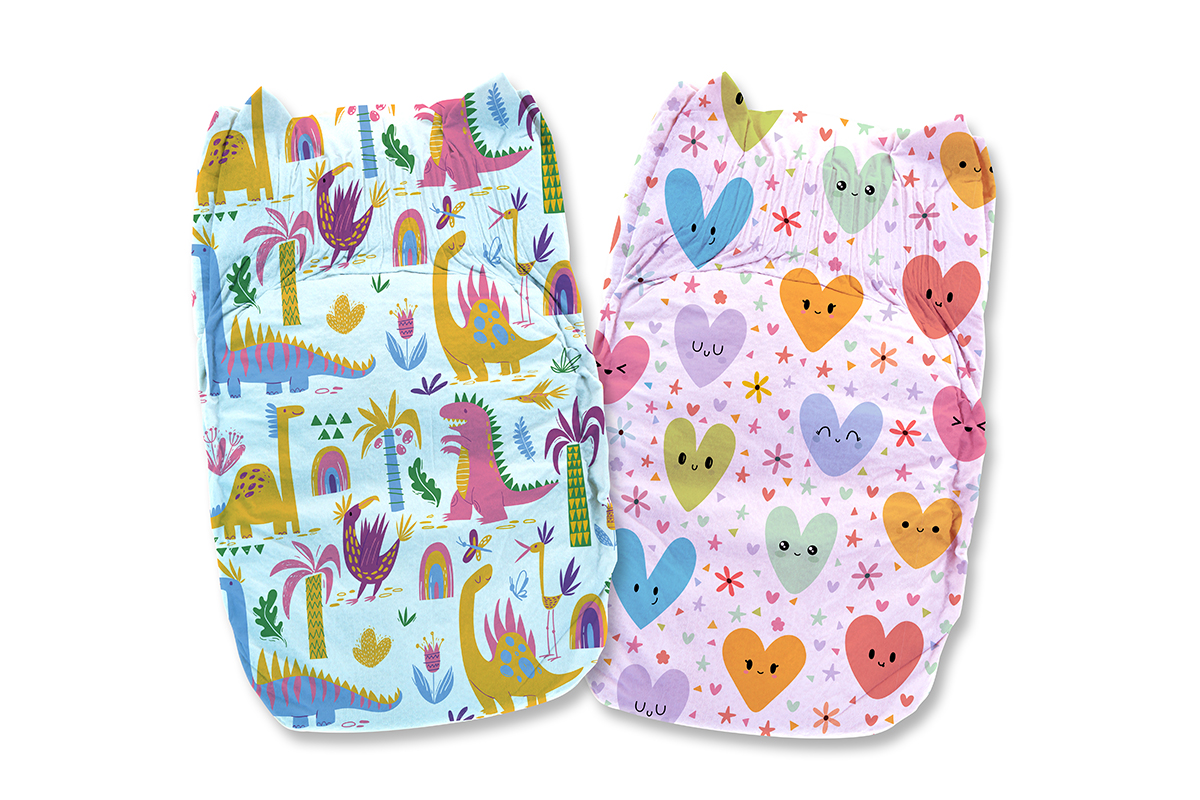
Inkjet Diapers – Image from Kodak
Just look around you and notice everything which has a logo, text, pattern or graphics on any surface. Print is having a renaissance, as exciting world of inkjet expands beyond paper and documents.
With all the new print technology and markets opening for designers in the industrial inkjet print space, ask yourself, do you have the knowledge to seek these new opportunities? Maybe you are busy enough in the markets you serve now. Good for you! But, for the designers who are up for the challenge, these new opportunities will make you valuable to the many large manufacturers who, within a recession, do not eliminate marketing efforts and cut designers from the payroll.
We are here to help you. Inkjet Insight works closely with machine developers and in-plant manufacturers to help you prepare for these new design opportunities. We have on-line and on-site training to help both designers and product manufacturers prepare for designing and printing in house. The world of print is changing. Are you ready?

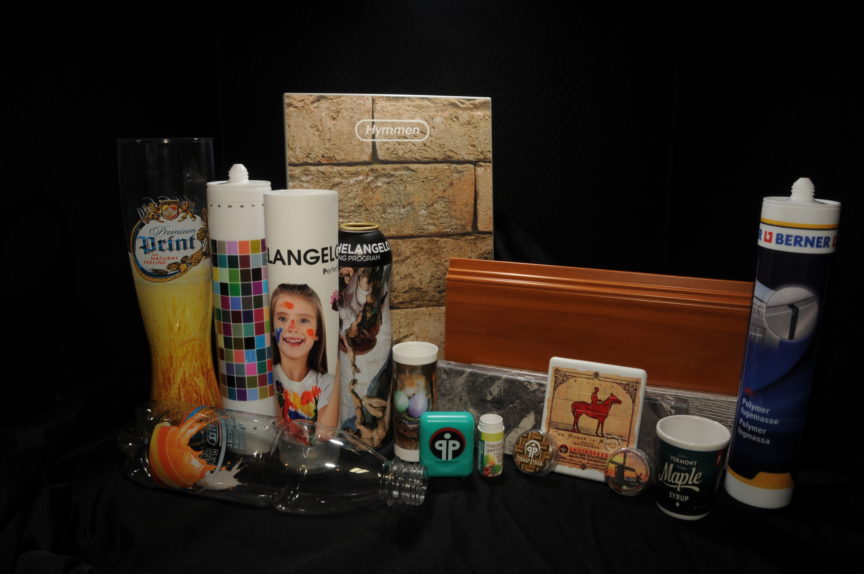
Comments
How exciting to know the ever-changing world of ink. The unique and various ways to personalize our world within a digital format. Art has chosen the world of color and Inkjet Insight provides a visionary direction for those that dare exploring this progressive form of mastering the new art of tomorrow.